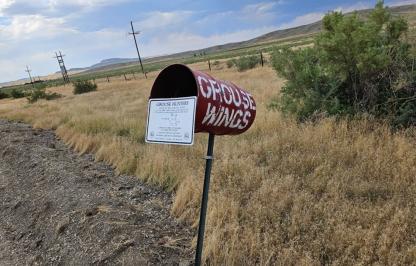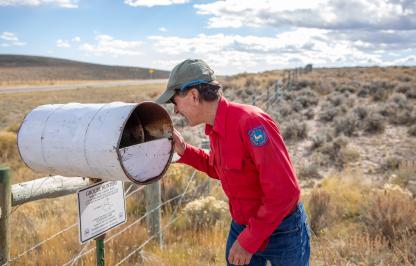Antelope herds are in fair condition throughout the region. Most herds are near or below the population management objective while one herd remains above.
“Over the past decade, antelope populations declined following a severe winter and subsequent drought, then rebounded through about 2017, but have since stabilized. Fawn production has generally been below what is needed for population growth in recent years. In addition, some portions of the region have experienced higher-than-normal winter losses of antelope over the past two years, particularly near Sundance and Newcastle and in some areas south of Casper,” said Justin Binfet, Casper region wildlife management coordinator.
Regardless, hunters should experience high success as antelope license issuance is augmented based on population trends, and buck ratios remain strong. Overall, hunters will experience moderate to high antelope densities in areas around Casper, but fairly modest densities in the rest of the region.
“Fortunately, hunters should expect to see better than average horn growth on mature bucks in most areas despite the extraordinary drought conditions occurring in most of the region this year,” Binfet said. “Antelope entered last winter in very good condition due to excellent forage production in 2019, and then experienced relatively mild spring weather this year -- conditions which are ideal for good horn growth.”
In areas west of Casper, many antelope hunters will be asked to have their antelope horns measured and teeth pulled for aging as part of a research project to evaluate optimal buck ratios to balance hunting opportunity with maximum horn growth potential.
The outlook for mule deer is mixed, with many areas now supporting more mule deer than in much of the past 10 years. Other areas continue to harbor lower than desired mule deer densities, especially in the Laramie Range (hunt areas 65 and 66). Buck ratios remain high in most mule deer herds, and hunter success should be good for those hunters hunting on private lands and in limited quota areas.
Those hunting public land in general license areas may experience low to moderate success in the face of higher hunting pressure and below-objective mule deer numbers. Private land hunters in the Cheyenne River area between Lusk and Newcastle should again see relatively good numbers of large antlered bucks as in the past couple of years.
“Hunters lucky enough to draw a license in limited quota conservatively managed areas should see very high buck ratios with modest trophy potential. In these high altitude, desert areas most prime-age mature bucks don’t get exceptionally large compared to some portions of the state,” Binfet said. “However, these herds are managed for strong numbers of older aged bucks and still produce some very nice deer every year.”
White-tailed deer populations continue to do well throughout the region, although hunters are reminded the vast majority of white-tails occupy private lands, with the Black Hills being an exception where high densities can be found on U.S. Forest Service land.
Elk numbers remain at or above objective levels in all herds. Elk seasons therefore continue to be extremely liberal in terms of season length and license issuance. In recent years, elk harvest has approached or exceeded record levels in many of the region’s herds.
“The region continues to provide excellent bull elk hunting opportunities, with many areas continuing to boast high harvest success on any-elk licenses and good mature bull antler quality,” Binfet said.
Antlerless elk hunter success continues to be good in most of the region, although high hunter densities on public lands often result in reduced hunter success in the early fall. In areas with interspersed public and private lands, antlerless elk hunters tend to require more days afield to harvest their elk as large cow/calf groups readily displace off of public land. The 2020 seasons will continue to emphasize female elk harvest throughout the region, while providing good mature bull hunting in most areas. Those hunters willing to expend the effort should continue to enjoy remarkable numbers of elk and good success if the weather cooperates.
2020 Fall Hunting Forecast - Casper Region



